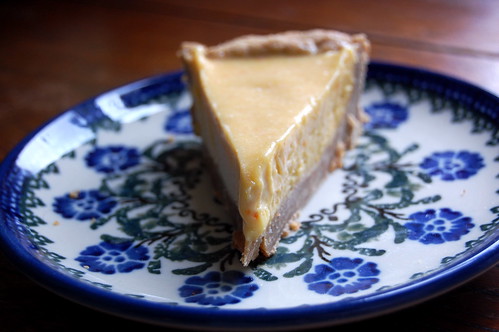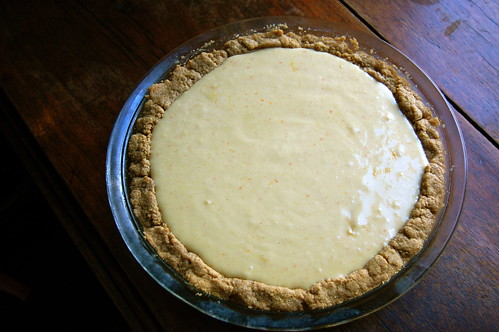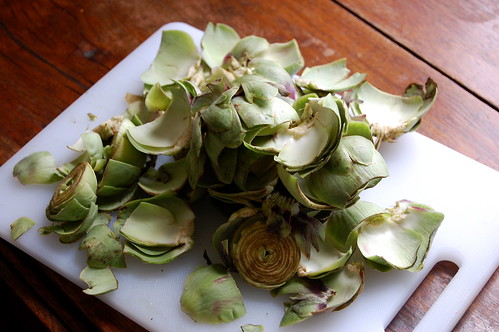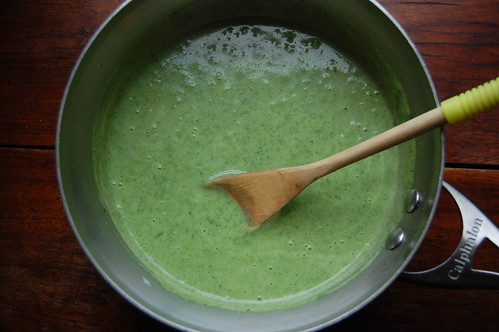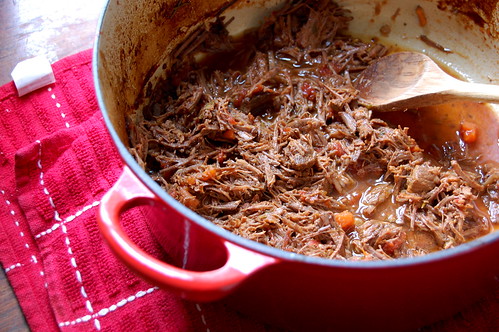
I am rarely interested in large hunks of meat and I'm usually happy with a glass or two of wine, all of which makes me a pretty cheap date should you want to take me out to dinner. However, every once in a while I spy a meat recipe that strikes my fancy, say pulled pork or lamb flatbreads. This ragu recipe caught my eye because it not only looked succulent and juicy and perfect for a rainy day, but because it's very little effort.
Most ragu recipes call for a combination of ground pork and veal, but this one calls for chunks of stew beef. Technically a ragu is simply a meat sauce cooked with tomatoes and vegetables, and can be made with anything from sausage to lamb shanks to oxtails. I'd argue that in this case the long braise of the meat in the oven makes this especially good. And yes, this does take about 4 hours in the oven, so set it aside for a lazy Sunday or a day when you're home early from work.
But besides that long stint in the oven, there's very little else you have to besides chop up some carrots and brown the meat. Also, the recipe makes a lot, so you can eat it all week or, if you have recipe ADD like me, you can freeze half the batch for later. The rich flavor works perfectly when paired with the neutrality of pasta and tamed with a sprinkling of cheese.

Beef Ragu
This is just as tasty with lamb. Also, if you (tragically) happen to be low on wine, try combining 2/3 a cup Marsala with 1 1/3 cup low-sodium beef stock.
2 pounds stew beef, cut in chunks
Salt and freshly ground black pepper
1 onion
2 sprigs fresh rosemary
2 tablespoons fresh sage
8 cloves garlic
3-4 large carrots, peeled
Olive oil
2 cups red wine
1 28-ounce can diced tomatoes
1. Pat the beef chunks dry with a paper towel, liberally coat with salt and pepper and set aside. Peel and coarsely chop the onions, and chop the garlic. Chop the carrot into thin rounds.
2. Place an oven-proof Dutch oven or heavy stockpot over medium-high heat, and add olive oil to cover the bottom thinly. When oil is hot, add the lamb and brown deeply. Do this in batches if necessary. Don't worry about drying out the meat — you want it browned darkly for good flavor (~10 minutes).
3. When the meat is thoroughly browned, add the onions, rosemary, sage, garlic, and carrots. Reduce heat to medium-low and sauté until vegetables are softened, about 10 minutes. Add wine and continue to simmer until liquid has reduced by half, about 10 minutes. Add the tomatoes and their juices to the pot.
4. Bring to a simmer, then cover and place in a 275-degree oven for 3 to 4 hours. The longer it cooks the more tender it will be. Check the pan every hour and a bit of water if it starts to look dry. When ready to serve, go through with two forks and shred any remaining chunks of meat. Taste and season if necessary with additional salt and pepper. Serve over pasta with freshly grated Parmesan cheese.

